Prefabricated warehouses single slope vs double slope
Against the backdrop of surging global demand for industrial warehousing, prefabricated warehouses have become production capacity accelerators for small and medium-sized enterprises and multinational companies with their advantages of rapid construction, flexible adaptation, and cost control. In the design of steel structure prefabricated warehouses, single slope roofs and double slope roofs are the two most common forms. Although both belong to the same steel structure system, they differ significantly in structural logic, material selection, and scene adaptability.
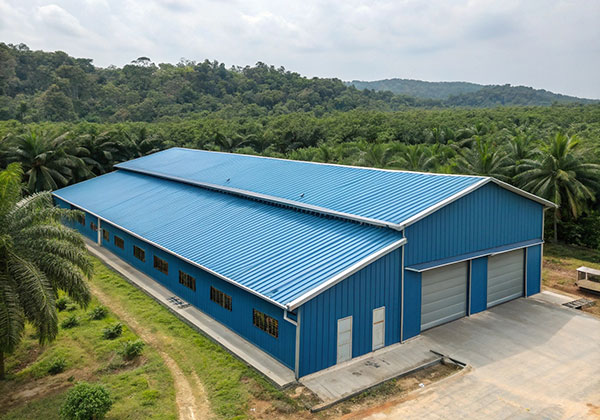
Ⅰ. Structure and material
1.1 Structural features
Single slope roof: Only one side is inclined (common slope 10°-20°), and the weight of the roof is concentrated on the single-side steel beam, forming a simplified structure of cantilever beams and support columns. The steel frame is based on the transverse main steel beam and the longitudinal secondary steel beam. The main steel beam needs to bear all the roof loads (snow load, rain load, equipment load), so the cross-sectional size is usually larger (such as H-beam height 400-600mm). The column grid spacing is limited by the roof span, which is generally 6-12 meters (the larger the span, the thicker the main steel beam section needs to be).
Double-slope roof: symmetrically tilted on both sides (common slope 15°-30°), the roof load is evenly transferred to the columns through the steel beams on both sides, forming a stable structure with symmetrical loads on both beams. The steel frame adopts a portal frame system (main steel column + inclined beam + purlin), and the inclined beam and steel column are connected by bolts or welding, and the force is more dispersed. The column grid spacing can be expanded to 12-24 meters (or even larger), which is suitable for large-span storage needs.
1.2 Material composition
The core materials of steel structure prefabricated warehouses includethe main structure (steel components), enclosure panels (roof/wall), and connection accessories (bolts/self-tapping screws). Single slope and double slope have different focuses in material selection due to differences in force.
- Main structure: Since the single-slope roof bears load on one side, the main steel beam needs to use higher strength steel (such as Q355B) or increase the section thickness (such as flange plate 20mm→25mm). Since the load of the double-slope roof is dispersed, the main steel column can be made of Q235B or Q355B (depending on the span), and the inclined beam is usually composed of H-shaped steel (height 300-400mm) + C-shaped purlin (section height 200mm) to reduce the overall steel consumption (saving 15%-20% compared to the single slope).
- Enclosure board: Since the drainage of the single-slope roof is concentrated and the roof slope is steeper (more than 20°), high-corrugated steel plates (wave height 50mm+)ormetal corrugated boardsare often used to improve the efficiency of rainwater drainage. The slope of the double-slope roof is relatively gentle (15°-20°), and color-coated steel plates (wave height 35mm) or sandwich panels (rock wool/polyurethane core material) can be selected to take into account both insulation and drainage requirements. The wall material is common to both (galvanized aluminum metal plate, color steel plate), but the double-slope roof has a larger column distance, and the wall needs to add a transverse support keel (C-shaped steel) to enhance the overall stability.
- Connection accessories: The single-slope roof is mainly bolted due to its simplified structure (reducing welding costs). The double-slope roof involves complex nodes between inclined beams and steel columns (such as corner braces and horizontal supports), so it needs to be equipped with high-strength bolts (8.8 grade M20) and welded combination nodes to ensure the ability to resist lateral displacement under large spans.
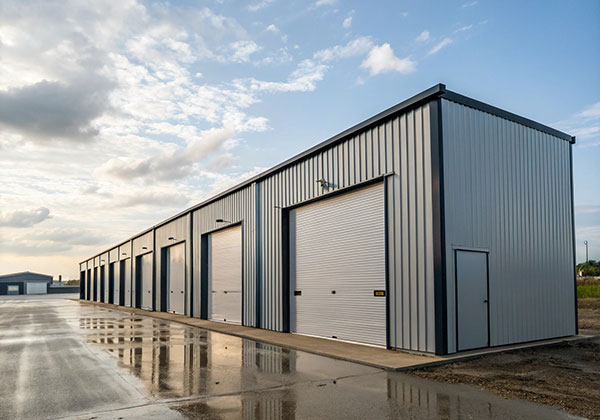
Ⅱ. Application scenarios
2.1 Single-slope roof
With its simple structure, low cost, and high space utilization, the single-slope roof is more suitable for scenarios where the rainfall is less than 800mm/year and the working surface needs to be expanded.
Typical areas: Tropical monsoon areas in Southeast Asia (such as the Philippines and Indonesia, with an average annual rainfall of 1500-3000mm but concentrated rainy season), the Sahel region of Africa (dry and rainless), and the edge of the desert in the Middle East (such as Saudi Arabia and the United Arab Emirates, which need to prevent sand and dust).
Core requirements: fast construction, low-cost operation and maintenance, and adaptability to temporary expansion needs. For example, a food processing plant in the Philippines needs to build a temporary warehouse to store raw materials before the rainy season. The single-slope roof only takes 2 months to complete the construction (double slope takes 3 months), and the roof slope of 20° can quickly drain concentrated rainfall and avoid water accumulation. At the same time, the column spacing of the single-slope structure is 8 meters (double slope requires 10 meters), and the internal column-free space is 90%, which is convenient for forklift operation and shelf placement.
2.2 Double-slope roof
The double-slope roof is more suitable for scenes with rainfall > 1200mm/year, heavy snow or typhoons due to “balanced drainage, large span, and strong wind and snow resistance”.
Typical regions: Northeastern North America (such as Ontario, Canada, with an average annual snowfall of 200cm+), Northern Europe (such as Stockholm, Sweden, with low temperatures and snow in winter), and East Asian monsoon regions (such as East China, China, Kyushu, Japan, with heavy rains and typhoons in summer).
Core requirements: long-term durability, large-capacity storage, and resistance to extreme weather. For example, a cold chain logistics center in Canada needs to build a 2,000㎡ cold storage warehouse. The double-slope roof (slope 25°) is combined with CL-W840 metal plate (waterproof grade P8) to withstand 50cm of snow (single slope can only withstand 30cm). At the same time, the portal frame structure (column spacing 12 meters) allows the internal column-free space to reach 100%, which is suitable for large shelves and forklifts. The symmetrical structure of the double slope can also reduce the lateral force of typhoons (reduced by 30% compared to the single slope) to ensure structural safety.
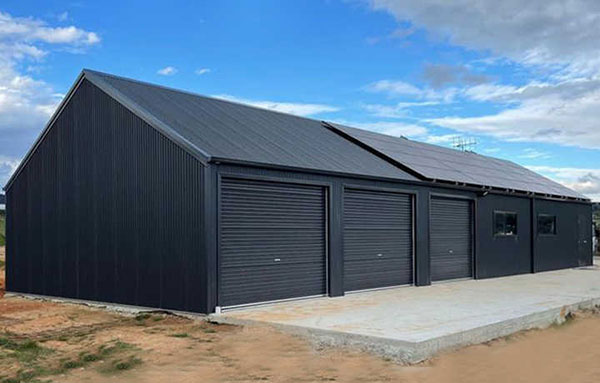
Ⅲ. Comparison of advantages and disadvantages
| Dimension | Single-Slope Roof | Double-Slope Roof |
|---|---|---|
| Cost | Lower initial cost (15%–20% steel savings) | Higher initial cost (20% more steel) but lower long-term O&M |
| Drainage Capacity | Steeper slope (>20°), rapid concentrated drainage | Gentler slope (15°–20°), uniform drainage |
| Span Capability | Max span 12m (limited by main beam size) | Max span 24m (advantage of portal frame) |
| Space Utilization | Smaller column spacing (6–8m), internal columns limit workspace | Larger column spacing (12–24m), column-free space for large equipment |
| Disaster Resistance | Weak wind resistance (≤8级), limited snow load (<30cm) | Strong wind resistance (12级), high snow load (>50cm) |
| Climate Suitability | Arid/semi-arid regions, concentrated rainy seasons | Rainy/snowy regions, typhoon-prone areas |
Ⅳ. How to choose between single slope and double slope?
In the global industrial warehousing market, the choice between single slope and double slope is essentially a dynamic balance of cost, performance and scenario.
- North America/Northern Europe: Snow and typhoons, double slope is preferred (safety first, high long-term benefits).
- Southeast Asia/Middle East: Rainfall is concentrated but budget is sensitive, single slope is the main choice (quick production, reducing initial investment).
- Africa/South America: drought and little rain + temporary storage needs, single slope is suitable (flexible expansion, reducing maintenance costs).
- East China/Japan: Summer rain and winter snow + typhoons, double slope is becoming the mainstream (taking into account safety and efficiency).
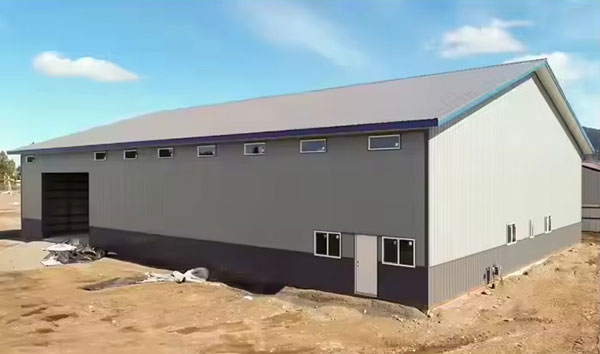
Ⅴ. Customized solutions of Canglong Group
Facing the differentiated needs of global customers, Canglong Group provides customers with the optimal solution of single slope/double slope with scenario-based design, modular manufacturing and global services, and even breaks through traditional boundaries to create innovative solutions for single and double slope hybrids.
5.1 Scenario-based design
Canglong Group has established a global climate industry database, combined with local meteorological data (such as average annual rainfall, maximum wind speed, snow depth) and customer needs (such as storage categories, equipment size), through PKPM, ETABS and other structural software simulation verification, accurately recommend single slope or double slope solutions.
Case 1: Designing a warehouse for a palm oil processing plant in Indonesia. The local annual average rainfall is 2800mm, but the rainy season is only 3 months. Canglong recommends a double slope portal frame high-wave metal tile solution (slope 22°). The amount of steel used in the roof is 20% less than that of the double slope, and the construction period is shortened by 1 month, which perfectly matches the centralized drainage in the rainy season and the low-cost operation and maintenance needs in the dry season.
Case 2: Designing a certain auto parts warehouse in Canada. The local annual average snowfall is 180cm. Canglong adopts a single slope CL-W840 waterproof board solution (slope 28°), with a span of 24 meters without columns, which can withstand 70cm of snow and ensure continuous production in winter.
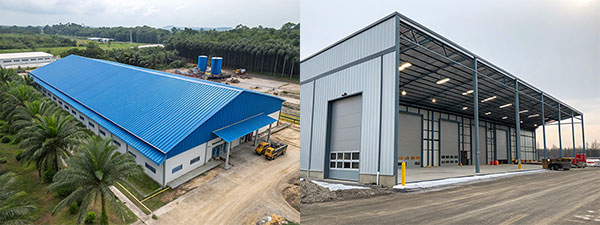
5.2 Modular manufacturing
Canglong Group has a large intelligent production base in Henan, equipped with CNC plasma cutting machines, automatic welding robots, laser rangefinders and other equipment, to achieve efficient production of steel components with 72-hour ordering and 15-day delivery.
- Material guarantee: All steel components (H-shaped steel, C-shaped steel) are made of Q235B/Q355B steel, with hot-dip galvanizing treatment on the surface (zinc layer ≥ 275g/㎡), and salt spray test >1000 hours (in line with ISO 14713 standard). Enclosure panels (color steel plates, sandwich panels) are SGS certified, with flame retardant grade B1 and waterproof grade P8.
- Precision control: The error of the steel beam of the single-slope roof is ≤2mm, and the error of the spacing of the double-slope portal frame column grid is ≤1mm, ensuring zero adjustment for on-site installation.
5.3 Global service
In response to overseas customers’ concerns about construction quality and communication efficiency, Canglong Group has built a global network of headquarters technical guidance and regional service centers.
- Language localization: Set up more than 10 professional language service teams, equipped with installation teams that understand local languages and are familiar with international standards.
- Logistics guarantee: Cooperate with international freight giants (Maersk, Mediterranean Shipping) to establish a fast customs clearance channel from the port to the construction site, and use containerized transportation for key components (breakage rate <0.1%) to ensure that the construction period is not affected.
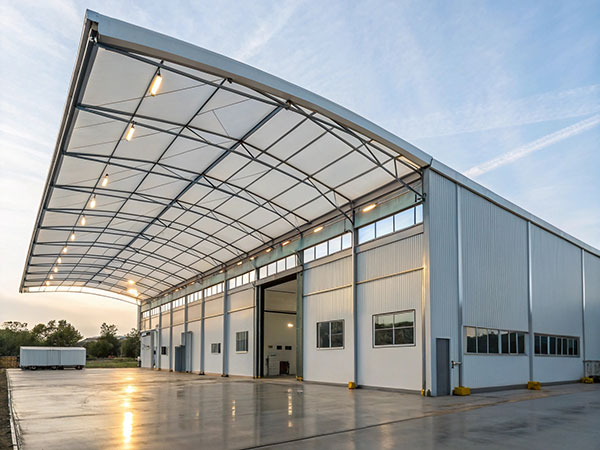
Ⅵ. Conclusion
In the competition between single-slope and double-slope prefabricated warehouses, there is no absolute advantage or disadvantage, only more suitable. With scenario-based design as the core, modular manufacturing as the support, and global services as the guarantee, Canglong Group creates a full-chain solution for customers from climate adaptation to functional extension. Whether it is a single-slope economic warehouse in arid areas or a double-slope safety warehouse in snowy areas, Canglong always uses the quality and efficiency of Chinese smart manufacturing to make every prefabricated warehouses the optimal solution for customers to increase production capacity.
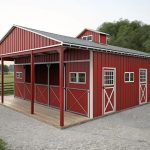
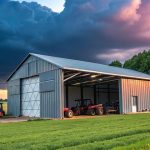
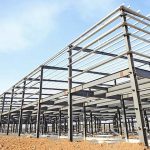
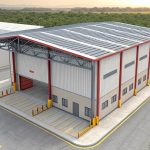
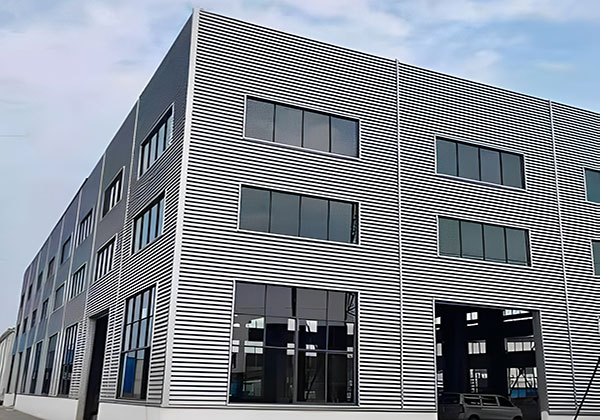
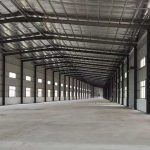
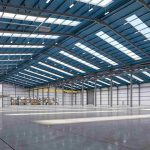
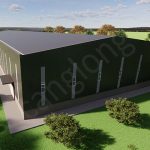
Send us the inquiry form